Jean Reidy's Blog, page 22
January 28, 2013
Congratulations to all the ALA Youth Media Award Winners!
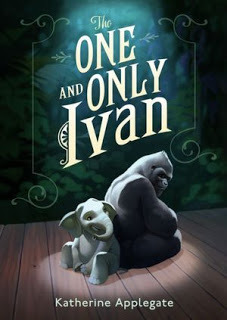 It's so fun watching the live stream of the Youth Media Awards and listening to the hoopla from the crowd for these brilliant authors, illustrators and books. I feel lucky to have read so many already and excited to add so many distinguished titles to my to-read list.
It's so fun watching the live stream of the Youth Media Awards and listening to the hoopla from the crowd for these brilliant authors, illustrators and books. I feel lucky to have read so many already and excited to add so many distinguished titles to my to-read list.Here's the press release:
SEATTLE — The American Library Association (ALA) today announced the top books, video and audiobooks for children and young adults – including the Caldecott, Coretta Scott King, Newbery and Printz awards – at its Midwinter Meeting in Seattle.
A list of all the 2013 award winners follows:
John Newbery Medal for the most outstanding contribution to children's literature:
“The One and Only Ivan,” written by Katherine Applegate, is the 2013 Newbery Medal winner. The book is published by HarperCollins Children’s Books, a division of HarperCollins Publishers.
Three Newbery Honor Books also were named: “Splendors and Glooms” by Laura Amy Schlitz and published by Candlewick Press; “Bomb: The Race to Build—and Steal—the World’s Most Dangerous Weapon” by Steve Sheinkin and published by Flash Point, an imprint of Roaring Brook Press; and “Three Times Lucky” by Sheila Turnage and published by Dial Books for Young Readers, a division of Penguin Young Readers Group.
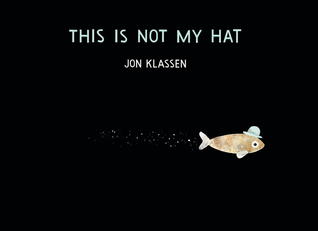
Randolph Caldecott Medal for the most distinguished American picture book for children:
“This Is Not My Hat,” illustrated and written by Jon Klassen, is the 2013 Caldecott Medal winner. The book is published by Candlewick Press.
Five Caldecott Honor Books also were named: “Creepy Carrots!” illustrated by Peter Brown, written by Aaron Reynolds and published by Simon & Schuster Books for Young Readers, an imprint of Simon & Schuster Children’s Publishing Division; “Extra Yarn,” illustrated by Jon Klassen, written by Mac Barnett and published by Balzer + Bray, an imprint of
HarperCollins Publishers; “Green,” illustrated and written by Laura Vaccaro Seeger and published by Neal Porter Books, an imprint of Roaring Brook Press; “One Cool Friend,” illustrated by David Small, written by Toni Buzzeo and published by Dial Books for Young Readers, a division of Penguin Young Readers Group; “Sleep Like a Tiger,” illustrated by Pamela Zagarenski, written by Mary Logue and published by Houghton Mifflin Books for Children, an imprint of Houghton Mifflin Harcourt Publishing Company.
Coretta Scott King (Author) Book Award recognizing an African American author and illustrator of outstanding books for children and young adults:
“Hand in Hand: Ten Black Men Who Changed America,” written by Andrea Davis Pinkney and illustrated by Brian Pinkney is the King Author Book winner. The book is published by Disney/Jump at the Sun Books, an imprint of Disney Book Group.
Two King Author Honor Books were selected: “Each Kindness” by Jacqueline Woodson, illustrated by E. B. Lewis and published by Nancy Paulsen Books, a division of Penguin Young Readers Group; and “No Crystal Stair: A Documentary Novel of the Life and Work of Lewis Michaux, Harlem Bookseller” by Vaunda Micheaux Nelson, illustrated by R. Gregory Christie and published by Carolrhoda Lab, an imprint of Carolrhoda Books, a division of Lerner Publishing Group, Inc.
Coretta Scott King (Illustrator) Book Award:
“I, Too, Am America,” illustrated by Bryan Collier, is the King Illustrator Book winner. The book is written by Langston Hughes and published by Simon & Schuster Books for Young Readers, an imprint of Simon & Schuster Children’s Publishing Division.
Three King Illustrator Honor Books were selected: “H. O. R. S. E.,” illustrated and written by Christopher Myers, and published by Egmont USA; “Ellen’s Broom,” illustrated by Daniel Minter, written by Kelly Starling Lyons and published by G. P. Putnam’s Sons, a division of Penguin Young Readers Group; and “I Have a Dream: Martin Luther King, Jr.” illustrated by Kadir Nelson, written by Martin Luther King, Jr. and published by Schwartz & Wade Books, an imprint of Random House Children’s Books, a division of Random House, Inc.
 Michael L. Printz Award for excellence in literature written for young adults:
Michael L. Printz Award for excellence in literature written for young adults:“In Darkness,” written by Nick Lake, is the 2013 Printz Award winner. The book is published by Bloomsbury Books for Young Readers.
Four Printz Honor Books also were named: “Aristotle and Dante Discover the Secrets of the Universe” by Benjamin Alire Sáenz, published by Simon & Schuster Books for Young Readers, an imprint of Simon & Schuster Children’s Publishing Division; “Code Name Verity” by Elizabeth Wein, published by Hyperion, an imprint of Disney Book Group; “Dodger” by Terry Pratchett, published by HarperCollins Children’s Books, a division of HarperCollins Publishers; “The White Bicycle” by Beverley Brenna, published by Red Deer Press.
Schneider Family Book Award for books that embody an artistic expression of the disability experience:
“Back to Front and Upside Down!” written and illustrated by Claire Alexander and published by Eerdmans Books for Young Readers, an imprint of Wm. B. Eerdmans Publishing Co., wins the award for children ages 0 to 10.
“A Dog Called Homeless” written by Sarah Lean and published by Katherine Tegen Books, an imprint of HarperCollins Publishers, is the winner of the middle-school (ages 11-13) award.
The teen (ages 13-18) award winner is “Somebody, Please Tell Me Who I Am,” written by Harry Mazer and Peter Lerangis and published by Simon & Schuster Books for Young Readers, an imprint of Simon & Schuster Children’s Publishing Division.
Alex Awards for the 10 best adult books that appeal to teen audiences:
“Caring is Creepy,” by David Zimmerman, published by Soho Press, Inc.
“Girlchild,” by Tupelo Hassman, published by Farrar, Straus and Giroux
“Juvenile in Justice,” by Richard Ross, published by Richard Ross
“Mr. Penumbra’s 24-Hour Bookstore,” by Robin Sloan, published by Farrar, Straus and Giroux
“My Friend Dahmer,” by Derf Backderf, published by Abrams ComicArts, an imprint of Abrams
“One Shot at Forever,” by Chris Ballard, published by Hyperion
“Pure,” by Julianna Baggott, published by Grand Central Publishing, a division of Hachette Book Group, Inc.
“The Round House,” by Louise Erdrich, published by Harper, an imprint of HarperCollins Publishers
“Tell the Wolves I’m Home,” by Carol Rifka Brunt, published by Dial Press, an imprint of the Random House Publishing Group, a division of Random House, Inc.
“Where’d You Go, Bernadette?,” by Maria Semple, published by Little, Brown and Company, a division of Hachette Book Group, Inc.
Andrew Carnegie Medal for excellence in children's video:
Katja Torneman, producer of “Anna, Emma and the Condors,” is the Carnegie Medal winner.
Laura Ingalls Wilder Award honors an author or illustrator whose books, published in the United States, have made, over a period of years, a substantial and lasting contribution to literature for children. The 2013 winner is Katherine Paterson. Paterson was born in China in 1932 to missionary parents and grew up in the American South, moving eighteen times before she was 18. After graduating from King College in Bristol, Tennessee, she herself became a missionary in Japan. She returned to the U.S. to attend the Union Theological Seminary in New York, where she met and married John Paterson, a Presbyterian minister. Her first book, “The Sign of the Chrysanthemum,” was published in 1973. Katherine Paterson currently lives in Barre, Vermont.
Coretta Scott King-Virginia Hamilton Award for Lifetime Achievement: Demetria Tucker is the 2013 recipient. Tucker has served as youth services coordinator within the Roanoke (Va.) Public Library System and library media specialist at the Forest Park Elementary School, where she was selected 2007 Teacher of the Year. As family and youth services librarian for the Pearl Bailey Library, a branch of the Newport News (Va.) Public Library System, Tucker now coordinates a youth leadership program, a teen urban literature club and many other programs that support the youth of her community.
Margaret A. Edwards Award for lifetime achievement in writing for young adults:
Tamora Pierce is the 2013 Edwards Award winner. Pierce was born in rural Western Pennsylvania in 1954. She knew from a young age she liked stories and writing, and in 1983, she published her first book, Song of the Lioness. She continues to write and even record her own audiobooks. She currently lives with her husband (spouse-creature) and a myriad of animals in Syracuse, New York.
May Hill Arbuthnot Honor Lecture Award recognizing an author, critic, librarian, historian or teacher of children's literature, who then presents a lecture at a winning host site.
Andrea Davis Pinkney will deliver the 2014 May Hill Arbuthnot Honor Lecture. Andrea Davis Pinkney is a New York Times best-selling writer of more than 20 books for children and young adults including picture books, novels and nonfiction. During the course of her career, Pinkney has launched many high-profile publishing and entertainment entities, including Hyperion Books for Children/Disney Publishing’s Jump at the Sun imprint, the first African American children’s book imprint at a major publishing company.
Mildred L. Batchelder Award for an outstanding children's book originally published in a language other than English in a country other than the United States and subsequently translated into English for publication in the United States:
“My Family for the War” is the 2013 Batchelder Award winner. Originally published in Germany in 2007 as “Liverpool Street,” the book was written by Anne C. Voorhoeve, translated by Tammi Reichel and published by Dial Books, an imprint of Penguin Group (USA) Inc.
Two Batchelder Honor Books also were selected: “A Game for Swallows: To Die, to Leave, to Return,” written and illustrated by Zeina Abirached, translated by Edward Gauvin and published by Graphic Universe, a division of Lerner Publishing Group, Inc.; and “Son of a Gun,” written and translated by Anne de Graaf, and published by Eerdmans Books for Young Readers, an imprint of Wm. B. Eerdmans Publishing Co.
Odyssey Award for best audiobook produced for children and/or young adults, available in English in the United States:
“The Fault in Our Stars,” produced by Brilliance Audio, is the 2013 Odyssey Award winner. The book is written by John Green and narrated by Kate Rudd.
Three Odyssey Honor Audiobooks also were selected: “Artemis Fowl: The Last Guardian,” produced by Listening Library, written by Eoin Colfer and narrated by Nathaniel Parker; “Ghost Knight,” produced by Listening Library, written by Cornelia Funke and narrated by Elliot Hill; and “Monstrous Beauty,” produced by Macmillian Audio, written by Elizabeth Fama and narrated by Katherine Kellgren.
Pura Belpré (Illustrator) Award honoring a Latino writer and illustrator whose children's books best portray, affirm and celebrate the Latino cultural experience:
“Martín de Porres: The Rose in the Desert,” illustrated by David Diaz, is the Belpré Illustrator Award winner. The book was written by Gary D. Schmidt and published by Clarion Books, an imprint of Houghton Mifflin Harcourt Publishing Company.
No Belpré Illustrator Honor Books were selected this year.
Pura Belpré (Author) Award:
“Aristotle and Dante Discover the Secrets of the Universe,” written by Benjamin Alire Sáenz, is the Belpré Author Award winner. The book is published by Simon & Schuster Books for Young Readers, an imprint of Simon & Schuster Children’s Publishing Division.
One Belpré Author Honor Book was named: “The Revolution of Evelyn Serrano” by Sonia Manzano, published by Scholastic Press, an imprint of Scholastic Inc.
Robert F. Sibert Informational Book Award for most distinguished informational book for children:
“Bomb: The Race to Build—and Steal—the World’s Most Dangerous Weapon,” written by Steve Sheinkin, is the Sibert Award winner. The book is published by Flash Point, an imprint of Roaring Brook Press.
Three Sibert Honor Books were named: “Electric Ben: The Amazing Life and Times of Benjamin Franklin,” written and illustrated by Robert Byrd and published by Dial Books for Young Readers, a division of Penguin Young Readers Group; “Moonbird: A Year on the Wind with the Great Survivor B95,” written by Phillip M. Hoose and published by Farrar Straus Giroux Books for Young Readers; and “Titanic: Voices from the Disaster,” written by Deborah Hopkinson and published by Scholastic Press, an imprint of Scholastic Inc.
Stonewall Book Award - Mike Morgan & Larry Romans Children’s & Young Adult Literature Award given annually to English-language children’s and young adult books of exceptional merit relating to the gay, lesbian, bisexual and transgender experience:
“Aristotle and Dante Discover the Secrets of the Universe,” written by Benjamin Alire Sáenz and published by Simon & Schuster Books for Young Readers, an imprint of Simon & Schuster Children’s Publishing Division, is the Stonewall Award winner.
Four Stonewall Honor Books were selected: “Drama,” written and illustrated by Raina Telgemeier and published by Graphix, an imprint of Scholastic Inc.; “Gone, Gone, Gone,” written by Hannah Moskowitz and published by Simon Pulse, an imprint of Simon & Schuster Children’s Publishing Division; “October Mourning: A Song for Matthew Shepard,” written by Lesléa Newman and published by Candlewick Press; and “Sparks: The Epic, Completely True Blue, (Almost) Holy Quest of Debbie,” written by S. J. Adams and published by Flux, an imprint of Llewellyn Worldwide Ltd.

Theodor Seuss Geisel Award for the most distinguished beginning reader book:
“Up, Tall and High!” written and illustrated by Ethan Long is the Seuss Award winner. The book is published by G. P. Putnam’s Sons, a division of Penguin Young Readers Group.
Three Geisel Honor Books were named: “Let’s Go for a Drive!” written and illustrated by Mo Willems, and published by Hyperion Books for Children, an imprint of Disney Book Group; “Pete the Cat and His Four Groovy Buttons” by Eric Litwin, created and illustrated by James Dean and published by HarperCollins Children’s Books, a division of HarperCollins Publishers; and “Rabbit & Robot: The Sleepover,” written and illustrated by Cece Bell and published by Candlewick Press.
William C. Morris Award for a debut book published by a first-time author writing for teens:
“Seraphina,” written by Rachel Hartman, is the 2013 Morris Award winner. The book is published by Random House Children’s Books, a division of Random House, Inc.
Four other books were finalists for the award: “Wonder Show,” written by Hannah Barnaby, published by Houghton Mifflin, an imprint of Houghton Mifflin Harcourt Books for Young Readers; “Love and Other Perishable Items,” written by Laura Buzo, published by Alfred A. Knopf, an imprint of Random House Children’s Books, a division of Random House, Inc.; “After the Snow,” written by S. D. Crockett, published by Feiwel and Friends, an imprint of Macmillan Children’s Publishing Group; and “The Miseducation of Cameron Post,” written by emily m. danforth, published by Balzer + Bray, an imprint of HarperCollins Publishers.
YALSA Award for Excellence in Nonfiction for Young Adults:
“Bomb: The Race to Build—and Steal—the World’s Most Dangerous Weapon,” written by Steve Sheinkin, is the 2013 Excellence winner. The book is published by Flash Point/Roaring Brook Press, an imprint of Macmillan Children’s Publishing Group.Four other books were finalists for the award: “Steve Jobs: The Man Who Thought Different,” written by Karen Blumenthal, published by Feiwel & Friends, an imprint of (Macmillan Children’s Publishing Group; “Moonbird: A Year on the Wind with the Great Survivor B95,” written by Phillip Hoose, published by Farrar Straus Giroux, an imprint of Macmillan Children’s Publishing Group; “Titanic: Voices from the Disaster,” written by Deborah Hopkinson, published by Scholastic Press, an imprint of Scholastic; and “We’ve Got a Job: The 1963 Birmingham Children’s March,” written by Cynthia Levinson, published by Peachtree Publishers.
Recognized worldwide for the high quality they represent, ALA awards guide parents, educators, librarians and others in selecting the best materials for youth. Selected by judging committees of librarians and other children’s literature experts, the awards encourage original and creative work. For more information on the ALA youth media awards and notables, please visit www.ala.org/yma .
Published on January 28, 2013 10:31
January 25, 2013
Pay it Forward Friday: World Read Aloud Day
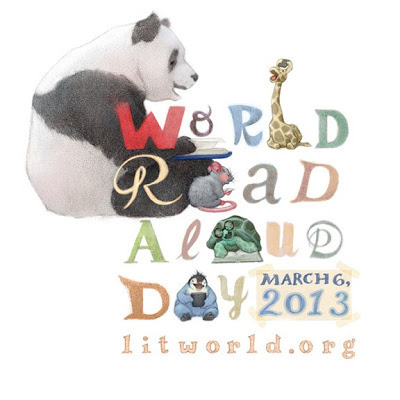
WRADvocate with Us!
World Read Aloud Day is March 6, 2013. Celebrate with us to advocate for every child's right to read.LitWorld is Going on Tour
We're taking World Read Aloud Day on the road and LitWorld's first ever WRAD bus tour could be coming to your school! If you want a magical visit from the LitWorld team on March 6, get started on your contest entry today. Click here to apply.Spread the Movement
Register at litworld.org and tell us how you plan to celebrate on March 6, and don't forget to join our Facebook event ! Download Free Activities and Resources
Are you an educator organizing an author chat for your class? A teen hosting a book swap? A kid throwing a pajama party? A business leader ready to motivate your team? A parent who wants to take action?
Download our Event Kit and WRAD Activity Packet and start planning your celebration today! litworld.org - facebook - twitter - youtube - crowdrise
Where will you be reading? Please share your plans, experiences and ideas in the comments below.
Published on January 25, 2013 05:49
January 11, 2013
Pay it Forward Friday: My Free School Skype Visits
It's been an amazing week of Skype visits. And I'm scheduling many more for 2013. Everything you need to bring me into your classroom for FREE is right here: http://www.jeanreidy.com/Time_Out_for_Teachers.html
Published on January 11, 2013 12:53
January 10, 2013
Clear the Clutter to Open Up Creativity
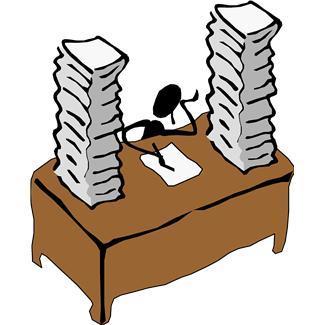 Whether it's the clutter on your desk, the clutter in your fridge or the clutter in your mind, clutter equals stress. And stress and clutter take up valuable creative brain space and creative energy.
Whether it's the clutter on your desk, the clutter in your fridge or the clutter in your mind, clutter equals stress. And stress and clutter take up valuable creative brain space and creative energy.A great exercise for transitioning into the new year is to take care of your non-creative business so that you can start the year off with a clean slate.
For me, that meant:
Reconciling my bank and credit card accountsPaying billsReturning and exchanging holiday gifts Taking down the holiday decor Updating my contact listsOutlining a few newsy blog postsReviewing my promotion plans for upcoming book releasesPutting together my schedule of appearances and school visitsOnce that's finished, I'll be ready to open up new Word docs or print off fresh copies of my current works-in-progress and get on with my writing and revising with an uncluttered creative space.
What clutter can you clear out of your creative space?
Published on January 10, 2013 07:25
January 7, 2013
The Boredom Buster Blog is Back in Business! Prizes! WOW!
To celebrate the release of the TOO PRINCESSY! Board Book, the TOO PRINCESSY! Boredom Buster Blog is back in business. Send me your boredom busting idea during the months of January and February and I'll publish them on the blog. Then, on 3/1/13, all who send ideas will be entered into a drawing for a $100 gift card to Amazon or the online bookseller of their choice.
All the details are right here:
The TOO PRINCESSY! BOREDOM BUSTER BLOG!
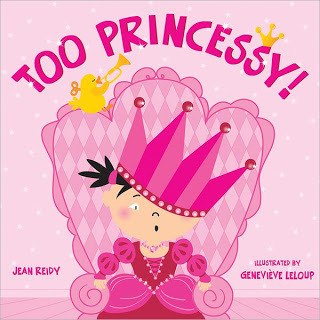
All the details are right here:
The TOO PRINCESSY! BOREDOM BUSTER BLOG!

Published on January 07, 2013 12:59
January 2, 2013
Writing as a Career: Jennifer Nielsen on the Realities and Economics of Publishing
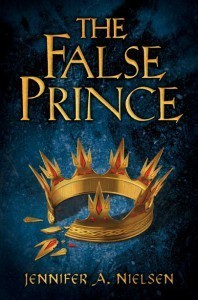
As the new year begins, whether you're dabbling in writing, considering a career as a writer, selling your first book or just curious about the nuances and economics of traditional publishing, you might wonder if children's authors can make a living. The truth - some do and many don't. In today's guest post, award-winning, best-selling author of THE FALSE PRINCE, Jennifer Nielsen offers a wealth of information on the dollars and cents of the industry and her advice on your best shot at success.
So please welcome my agency-mate, Jennifer Nielsen! Take it away, Jenn.
This post was prompted by a specific question from an aspiring author wondering whether it was realistic to dream of one day making novel writing her full time career. This is how I answered:
One thing to consider with this question is how the industry works. There are nearly unlimited options available to writers today, who may write novels, magazine articles, online content, screenplays, etc. For those seeking to write books, there are still a number of options ranging from self-publishing a few copies for family and friends or putting up your own ebook on Amazon, to working with a small publishing house, to working with one of the major houses in New York (and several options in between). My answer will assume that you go with traditional publishing, because all rules change with self-publishing.
A. Part of the book deal is negotiating terms for an advance. Your advance could be anywhere from zero up to a five or six figure dollar amount. That number is factored by the size of the publisher, their policies on advances, and by their expectations for how well your book will sell.
B. The advance is usually divided into thirds: on signing the contract, delivering the final manuscript, and on publication.
C. Publication lead times can be as long as two years. Which spreads out that advance over a good length of time.
D. After publication, you have to earn out your advance before you begin earning royalties. Ideally, you would do that within a year. Statistically speaking, a great number of books don't earn out. Publishers earn their money from the books that do.
E. Royalties are usually paid twice a year. If you have an agent, they take their cut right off the top (which likely causes you to bristle, but I LOVE my agent. Among other benefits of having an agent, she has definitely gotten me better than that through her negotiating), and then you take the rest.
F. Unless your book is a breakout success (and that does happen, such as for TWILIGHT), the vast majority of career authors see their popularity slowly build over time. So if your first book doesn't have earnings that allow you to go full-time, don't be discouraged. This is normal and will only get better. Most book sales happen two ways. First is via word of mouth, and that grows over months and sometimes years. Second is your growing reputation as readers who liked your first book begin looking for your next one, and then your next.
All that sounds rather impossible and discouraging, I know. I've been there too. But consider these things as well:
A. Once you get your first contract (or even earlier), start writing your next book. Then you can sell it and broaden your career and income. If you want to do this as a career, then never rest on a single sale. Always keep your eye on the next book.
B. With larger houses, you may see foreign sales, audio books, and sometimes even a movie option. All of these can bring in additional money.
C. As your name gets out there, other writing opportunities may also open up to you. Have a "yes" attitude and they will come.
D. There are things you can do to boost sales, or earn additional income, such as with school visits, conference appearances, Skype visits, etc. This is challenging if you're managing a full time day job as well, but find ways to do that where possible, and it will help to spread word about you and your books.
E. If you continue to put out books, eventually you *could* have enough, between advances, royalties, and extra stuff, to call it a career. Nearly always though, this is a gradual process. Be patient.
So…what to do is you want a full time career.
Writing isn't a one-size-fits-all career where there's only one option, one definition of success, or one way to reach your goals. However, things that will make it easier for you to get to a full time career include:
A. Find your niche - figure out who you are as a writer. And there are endless options for what kind of writer you could be. Once you know this answer, look at others in that same niche who are successful and make them your model. For all kinds of writers, there are people enjoying full time careers.
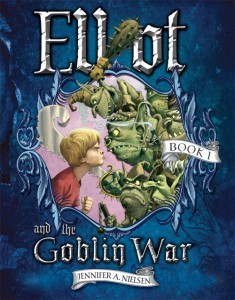 B. Write the best book you possibly can. We're all trying to do that, right? Not all books are intended to be big commercial hits, but every year there are books that hit the bestseller lists that were never intended to be big commercial hits. The reason why they hit the list is the writing is stellar. Your book doesn't have to be epic, it doesn't have to be the next HARRY POTTER or HUNGER GAMES, but it does have to have solid writing, characters your readers love, sincere emotional content, and themes that the readers remember. This step seriously is the very most important in determining whether writing becomes your career. If the publisher is passionate about the book, they will market it more enthusiastically, which translates to greater exposure and sales, bloggers will write about it, indie bookstores will stock it and hand sell it. And word of mouth will spread.
B. Write the best book you possibly can. We're all trying to do that, right? Not all books are intended to be big commercial hits, but every year there are books that hit the bestseller lists that were never intended to be big commercial hits. The reason why they hit the list is the writing is stellar. Your book doesn't have to be epic, it doesn't have to be the next HARRY POTTER or HUNGER GAMES, but it does have to have solid writing, characters your readers love, sincere emotional content, and themes that the readers remember. This step seriously is the very most important in determining whether writing becomes your career. If the publisher is passionate about the book, they will market it more enthusiastically, which translates to greater exposure and sales, bloggers will write about it, indie bookstores will stock it and hand sell it. And word of mouth will spread.C. That said, respect the fact that so much in any writer's career depends on luck. Books can rise or fall depending on larger market trends, factors in the economy, a happenstance mention of your book by a really big name, an influential person on an awards committee who plucks your book from obscurity, etc. There are brilliant books that never get discovered and average books that skyrocket. However, none of that is in your control. For that matter, once you have a final manuscript with your editor, most of what happens next is not in your control. Which only reinforces how important point B above is.
D. Get an agent. This can be a brutal process in dealing with the inevitable rejections, but writing is often a brutal business so you may as well use the agent search time to thicken your skin and toughen you up. Because like any roller coaster ride, there is a down for every up and all writers will face both. If your first manuscript isn't accepted, write another one and write it better. This part took me years. However, once you have an agent, they will be able to open the doors for you to get into the bigger houses that you can't walk through on your own (that's just the industry). There are some writers who earn full time salaries by being self-published or with small houses, but your odds improve dramatically at the bigger houses. To be clear, I'm not saying that any one option is better than another. Only that if you want to have a full time career, this is the route most likely to get you there.
E. Keep writing and putting out books. The best books you can write. In whatever genre you write, find books in that same genre that are selling well and figure out what they are doing well. Then you find a way to do it better.
F. And then be patient (that horrid word again, I know). Even for the really big writers, it almost always takes time. A lot of times when we see a bestselling author, it looks so easy, or as if they were just handed that success, or as if it came quickly. That is rarely true.
G. Finally, remember that nothing is ever guaranteed in this business (part of why it's brutal). Things can and do go differently than planned all the time. Your acquiring editor leaves and the one who replaces them isn't a cheerleader for your book. A book with a similar theme comes out two months ahead and gets all the buzz while yours ends up looking like a copycat. You get a dumb cover. Your publisher had a bad year and so they're cutting marketing on all but their few, top selling titles. Or you have a brilliant book and everything's perfect, but for some reason, it just doesn't get much attention. Again, you can't control any of this, so don't stress it. All you can do it go back to the blank page and keep on writing.
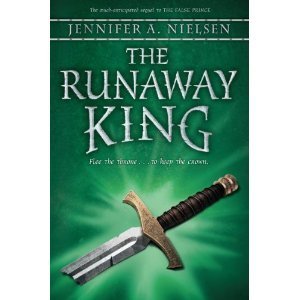 Bottom line is, write because you have to, because it's in your heart and blood and soul. Write with passion and so obsessively that you'll give up lunch breaks, sleep, and that latest episode of Honey Boo-Boo. And if it one day ends up that you can quit your day job and call writing your full time job, better still. That said, I do make a full time career of my writing. It took several years, and there's no guarantee for my future, but I'm very grateful to be here. It is possible for you to get there too.
Bottom line is, write because you have to, because it's in your heart and blood and soul. Write with passion and so obsessively that you'll give up lunch breaks, sleep, and that latest episode of Honey Boo-Boo. And if it one day ends up that you can quit your day job and call writing your full time job, better still. That said, I do make a full time career of my writing. It took several years, and there's no guarantee for my future, but I'm very grateful to be here. It is possible for you to get there too.Jennifer Nielsen
THE UNDERWORLD CHRONICLES
Elliot and the Goblin War
Elliot and the Pixie Plot
Elliot and the Last Underworld War
THE FALSE PRINCE (Now Available!)
A NYT Notable Book of 2012
A Publisher's Weekly Best Books of 2012
THE RUNAWAY KING (Scholastic, 3/1/13)
Long Live the Prince. Soon Die the King.
Thanks so much for this thoughtful post, Jennifer, and Happy New Year. We're looking so forward to the release of THE RUNAWAY KING in March!
Now, I'm putting it back to my readers. What are your goals for your writing career in 2013?
Published on January 02, 2013 07:06
December 29, 2012
Much Joy This Holiday Season
Sorry, I've been a little distracted the last few weeks. And here's why.
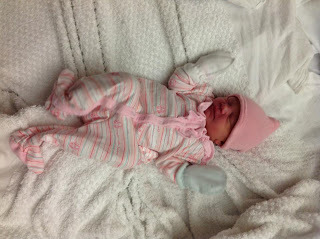 My lovely granddaughter was born.
My lovely granddaughter was born.
So while my blog has been a little empty, my heart has been very, VERY full.
I'll be back on the blog next week!
Wishing you all many blessings in the New Year!
Jean
 My lovely granddaughter was born.
My lovely granddaughter was born.So while my blog has been a little empty, my heart has been very, VERY full.
I'll be back on the blog next week!
Wishing you all many blessings in the New Year!
Jean
Published on December 29, 2012 08:09
December 6, 2012
Why Picture Books Are Important
Reprinting my post from National Picture Book Month for those of you who missed it.
Have you ever seen kids with picture books they love? They carry them around like security blankets. They chew on them. They sleep with them. They wake with them. And in turn, those beloved books awaken in children a love of reading.
The first book my oldest son Patrick loved was Big Wheels by Anne Rockwell. We always had to have a copy checked out at one of the many branches of our library, so that there would always be one in the house. Finally, Santa got smart and brought Pat Big Wheels. Pat chose it over all the other gifts under the tree to take to bed on Christmas night. A reader was born.
Reading aloud conjures the magic of picture books. And a large part of that magic is what happens off the page… the cuddling, chatting, discovery, and discussion. And if you think the child is the only one who benefits, think again.
I remember — when I was very, very young — cracking up on the couch as my Italian grandmother read me The Cat in the Hat Beginner Book Dictionary. I know what you’re thinking – a dictionary? Really? But, believe me, no one writes a dictionary like Dr. Seuss. And no one read it like Nonna. Nonna barely spoke English, yet she narrated page after page in the funniest voices. I then filled in my own words … and voices. We were on our reading journey together.
When kids learn to love reading, they can explore worlds, both real and imaginary, beyond their experience. But for the very young, those first picture books help them understand themselves and their own world, whether it’s their universe, their town, their timeout corner, their closet of clothes or even their cozy bed.
I encourage you to read through all the month's posts from celebrated authors and illustrators and then join us again next year.
Happy Reading!
Published on December 06, 2012 06:36
November 15, 2012
National Book Award Winners!
The 2012 National Book Award Winners. Congratulations to all! New great reads to add to my list!
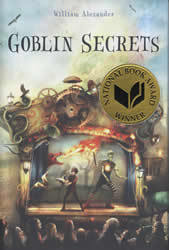 Young People's Literature
Young People's Literature
William AlexanderGoblin Secrets (Margaret K. McElderry Books, an imprint of
Simon & Schuster Children's Publishing)
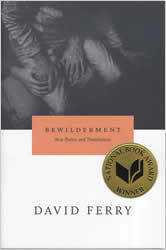
PoetryDavid Ferry,
Bewilderment: New Poems and Translations(University of Chicago Press)
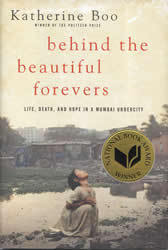
NonfictionKatherine BooBehind the Beautiful Forevers: Life, Death, and Hope in a Mumbai Undercity
(Random House)
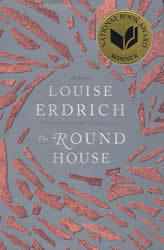 Fiction
Fiction
Louise Erdrich The Round House
(Harper, an imprint of HarperCollinsPublishers)
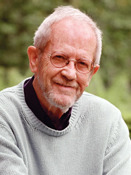 Medal for Distinguished Contribution to American Letters
Medal for Distinguished Contribution to American Letters
Elmore Leonard
Photo by Dermot Cleary.

Literarian Award for Outstanding Service to the American Literary Community
Arthur O. Sulzberger, Jr.
Photo by Brigitte Lacombe.

 Young People's Literature
Young People's Literature William AlexanderGoblin Secrets (Margaret K. McElderry Books, an imprint of
Simon & Schuster Children's Publishing)

PoetryDavid Ferry,
Bewilderment: New Poems and Translations(University of Chicago Press)

NonfictionKatherine BooBehind the Beautiful Forevers: Life, Death, and Hope in a Mumbai Undercity
(Random House)
 Fiction
FictionLouise Erdrich The Round House
(Harper, an imprint of HarperCollinsPublishers)
 Medal for Distinguished Contribution to American Letters
Medal for Distinguished Contribution to American LettersElmore Leonard
Photo by Dermot Cleary.

Literarian Award for Outstanding Service to the American Literary Community
Arthur O. Sulzberger, Jr.
Photo by Brigitte Lacombe.
Published on November 15, 2012 05:48
November 13, 2012
5 Unusual Places to Find Picture Book Inspiration
Picture book ideas can hit at the most unlikely times. In honor of picture book month, I'm reprinting my post from last year's PiBoIdMo about my most unusual sources of inspiration.
1. YouTube
Kids say and do the darndest things, right? And so often, they provide tender or hilarious or wonder-filled inspiration for picture books. But why limit yourself to the kids you know. More than ever, proud parents and brilliant marketers are happy to share a little one’s latest escapades. While I’ve never derived a direct storyline from YouTube videos, I do find in them that wacky lens through which to view a kid’s world. Here are some of my favorites:
2. Artist and Illustrator Websites
Three of my six picture books were inspired, in part, by browsing illustrators’ websites. Whether or not a particular illustrator ends up paired with my text, by studying the works of today’s most celebrated artists, I enter an altered state (Twilight Zone!) of visual creativity that triggers my muse. In the process I often discover a tone, emotion, whimsy or character that might just complete my story.
3. Beat Boxing
Whether they rhyme or not, most of my picture books have a distinct rhythm. And every so often that rhythm comes to me before the story. Listen carefully to your life. Do you hear the thump bump of your feet hitting the stairs each time you go up and down? Do you hear the crunch and shush of your shovel in crusty snow? How about the screech and thrum of an old file drawer? Beat box, then play with those rhythms to see if they have a story hidden inside them.
4. The Timeout Corner
Kids adore naughty characters. Whether we’re seeing ourselves or giggling with relief at another’s foibles, we all love stories with a little mischief in them. “Do some time” with a kid in timeout and you might just find a story there. Or think back to your own timeout corner—come on, fess up—we were all there once. What got you there? What were you feeling? Just remember, keep messages light. Because even a little mischief needs to be a fun read.
5. Your Day Job
Okay, let’s face it. Few of us get to take a morning stroll along the beach or dream by the hour under the old oak tree. Instead we might get regular face time with a subway hissing and shrieking during a crowded commute. Or the steely skyscraper out our window. Or the deli man who serves us pastrami on rye. Or a carpool of crack-me-up kids. Or even a baby giggling at the garbage man. Whether your day job is at home or away, it’s those “regular” experiences that often provide fodder for great picture books. Keep your notebook handy!
What are your most unusual sources of inspiration?
Find out more about PiBoIdMo 2012 right here.
1. YouTube
Kids say and do the darndest things, right? And so often, they provide tender or hilarious or wonder-filled inspiration for picture books. But why limit yourself to the kids you know. More than ever, proud parents and brilliant marketers are happy to share a little one’s latest escapades. While I’ve never derived a direct storyline from YouTube videos, I do find in them that wacky lens through which to view a kid’s world. Here are some of my favorites:
2. Artist and Illustrator Websites
Three of my six picture books were inspired, in part, by browsing illustrators’ websites. Whether or not a particular illustrator ends up paired with my text, by studying the works of today’s most celebrated artists, I enter an altered state (Twilight Zone!) of visual creativity that triggers my muse. In the process I often discover a tone, emotion, whimsy or character that might just complete my story.
3. Beat Boxing
Whether they rhyme or not, most of my picture books have a distinct rhythm. And every so often that rhythm comes to me before the story. Listen carefully to your life. Do you hear the thump bump of your feet hitting the stairs each time you go up and down? Do you hear the crunch and shush of your shovel in crusty snow? How about the screech and thrum of an old file drawer? Beat box, then play with those rhythms to see if they have a story hidden inside them.
4. The Timeout Corner
Kids adore naughty characters. Whether we’re seeing ourselves or giggling with relief at another’s foibles, we all love stories with a little mischief in them. “Do some time” with a kid in timeout and you might just find a story there. Or think back to your own timeout corner—come on, fess up—we were all there once. What got you there? What were you feeling? Just remember, keep messages light. Because even a little mischief needs to be a fun read.
5. Your Day Job
Okay, let’s face it. Few of us get to take a morning stroll along the beach or dream by the hour under the old oak tree. Instead we might get regular face time with a subway hissing and shrieking during a crowded commute. Or the steely skyscraper out our window. Or the deli man who serves us pastrami on rye. Or a carpool of crack-me-up kids. Or even a baby giggling at the garbage man. Whether your day job is at home or away, it’s those “regular” experiences that often provide fodder for great picture books. Keep your notebook handy!
What are your most unusual sources of inspiration?
Find out more about PiBoIdMo 2012 right here.
Published on November 13, 2012 10:13



